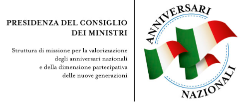Un labirinto di carta (Introduzione alla filologia gramsciana)
After having outlined the editorial vicissitudes of the "Notebooks" in their first publication in thematic form to the new critical edition now being completed, the essay deals with the specific nature of Gramsci's prison writing, whose full understanding is a necessary condition for capturing the author's "rhythm of thought". Some of these peculiarities were imposed by prison condition, while others stem from "rules" that were followed more or less consciously by the prisoner (some continuously, others only in certain phases of the writing) in writing down his annotations. The study of this behaviour, together with a minute analysis of the prison notebooks in their physical nature (covers, interventions by the prison authorities, handwriting and so on) has provided a notable quantity of indirect dating elements which, together with Gramsci's (few) direct indications, has allowed an ever more precise reconstruction of the chronology of the individual notebooks and of the blocks of notes that comprise them. Furthermore, the composite nature of Gramsci's manuscripts has clearly emerged: these may (with some approximation, because of the presence of some "mixed" notebooks) be divided into translation notebooks, miscellaneous notebooks and special notebooks. The new critical edition, by devoting one volume (divided in turn into more than one part) to each of these three typologies of notebooks, proposes to restore in the most faithful way possible this essential characteristic of the prison work.
Available online: Un labirinto di carta (Introduzione alla filologia gramsciana) (Accessed December 05, 2016)
| Language | ita |
| Names |
[author] Francioni, Gianni |
| Subjects |
Quaderni del carcere
Filologia
Prison Notebooks
Philology |

